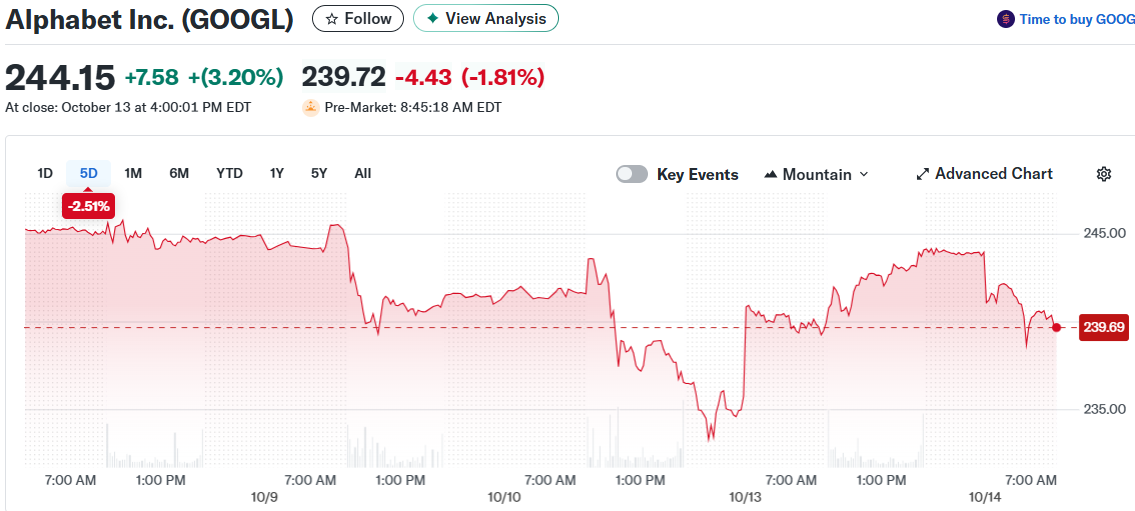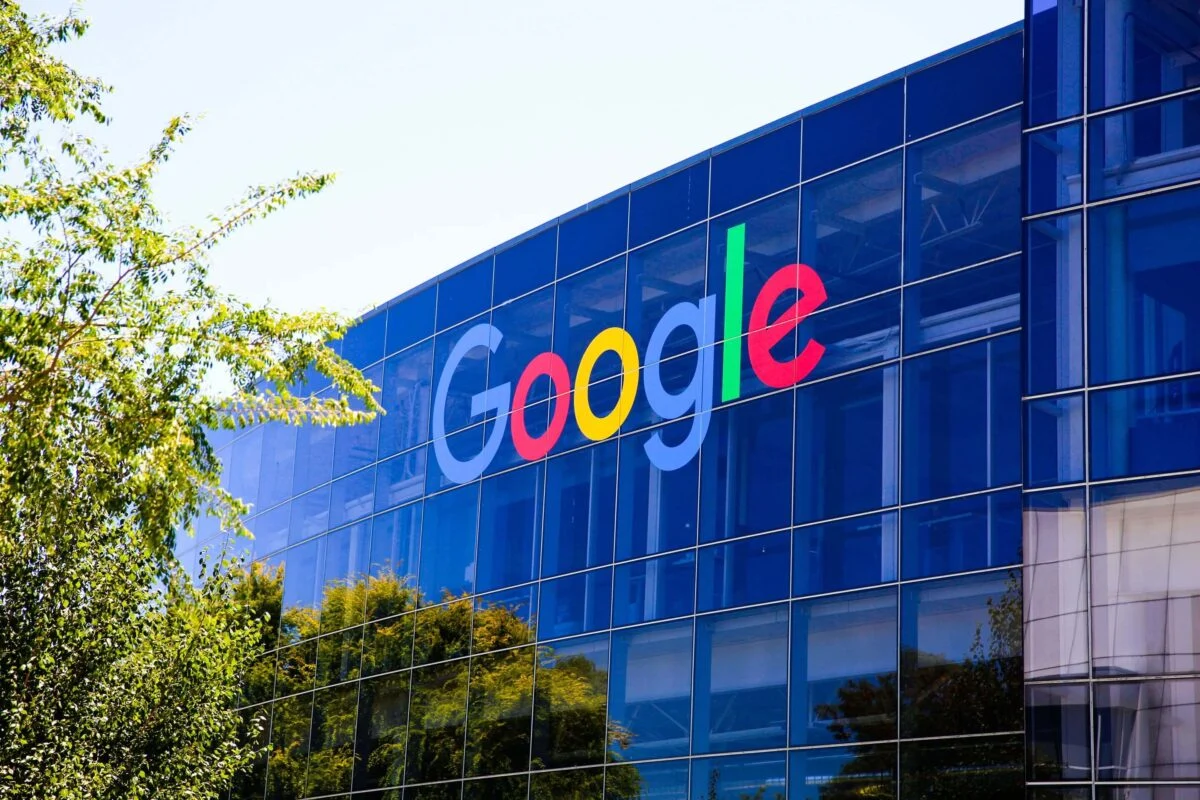TLDR
- Google plans to invest $15 billion to build a 1-gigawatt data center and AI hub in Visakhapatnam, India, over the next five years through 2030.
- This marks Google’s largest investment in India, surpassing its previous $10 billion commitment made in 2020.
- The project includes subsea cable infrastructure and will be developed in partnership with Bharti Airtel and AdaniConneX.
- The AI hub will offer Google’s full AI stack, including custom Tensor Processing Units and access to models like Gemini.
- GOOGL stock fell about 1% in premarket trading on Tuesday despite the announcement, after gaining 3.2% on Monday.
Google confirmed plans on Tuesday to build a $15 billion data center and AI hub in Visakhapatnam, India. The investment will take place over five years through 2030.
The project marks Google’s largest investment in India to date. It exceeds the company’s previous $10 billion commitment made in 2020.
The announcement came at Bharat AI Shakti, an event hosted by Google in New Delhi. The event served as a precursor to the India-AI Impact Summit 2026.

Google Cloud CEO Thomas Kurian said the facility will be scaled to “multiple gigawatts” over time. He described it as part of a global network of AI centers in 12 different countries.
The new hub will be located in Andhra Pradesh’s port city of Visakhapatnam. Google has partnered with Bharti Airtel to develop both the data center and cable landing station.
The tech giant also teamed up with AdaniConneX to set up the infrastructure. The partnership brings together major players in India’s telecommunications and infrastructure sectors.
Full AI Stack and Connectivity Plans
The AI hub will offer what Google calls a “full stack of solutions.” This includes custom Tensor Processing Units for local AI processing.
Google will provide access to its AI models, including Gemini. The platform will support building agents and applications.
Consumer services like Google Search, YouTube, Gmail, and Google Ads will also be supported. Kurian said the hub would serve not just India but Asia and other parts of the world.
Google plans to bring subsea cable infrastructure to Visakhapatnam. Kurian said the city would become “a global connectivity hub.”
The company expects Visakhapatnam to become a landing station for multiple cables. It will also provide a digital backbone connecting different parts of India.
Political Context and Economic Impact
The investment comes as India’s government pushes for reduced reliance on U.S. tech companies. After President Donald Trump imposed a 50% tariff on Indian imports in August, Prime Minister Narendra Modi urged the use of “swadeshi” or locally-made products.
Indian lawmakers and ministries have started promoting local alternatives. These include Zoho Corporation’s competitors to Google Cloud and Gmail.
WhatsApp-rival Arattai and MapMyIndia have also gained government support. While the initial impact has been limited, these moves could pose future challenges.
Google operates 14,000 employees in India and has been in the country for 21 years. The company counts Delhi and Mumbai as official cloud regions.
The choice of Visakhapatnam in Andhra Pradesh follows other tech investments in the region. Oracle and Microsoft have previously set up hubs in nearby Hyderabad.
Chief Minister N. Chandrababu Naidu has attracted these companies to the state. He is a key political ally who supported Modi’s return to power in the last general election.
Indian IT minister Ashwini Vaishnaw urged Google to consider the Andaman Islands as a future hub. He noted that Singapore “is all choked” and assured full government support.
An analysis commissioned by Google projects the AI hub will generate at least $15 billion in American GDP over five years. This accounts for new economic activity from cloud and AI adoption.
Vaishnaw thanked Google for making re-skilling and upskilling IT professionals a major part of the agenda. He described AI services as “a totally new category in our digital economy.”
GOOGL stock fell about 1% in premarket trading on Tuesday. This reversed Monday’s 3.2% gain, which followed a 2% pullback last Friday.






